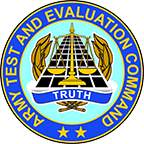- Homepage >
- Instrumentation >
- Role Play Work Station (RPWS)
Role Play Work Station (RPWS)
RPWS Overview
Role Play Workstation (RPWS) is personal computer deployable software that provides the capability for user interactive command and control (C2) message creation and receipt with situational awareness display in both degraded and un-degraded modes of operation in accordance with military doctrine for the Force XXI Battle Command Brigade and Below (FBCB2). Multiple command roles can be executed at an individual station. The RPWS provides for message creation and response for any number of designated simulated entities. It allows live forces to interact realistically with simulated forces during system tests or training exercises.
General Description
The RPWS suite is an assembly of several components that provides an interface between tactical C2 devices operating in a real-world environment and event drivers operating in a virtual or constructive environment. These event drivers can be automated simulation systems such as Janus, manual information entry such as a soldier at a data terminal, or other C2 devices used in training or supporting modes. The RPWS is the component that can simulate a variety of notional tactical elements including Army Battle Command System (ABCS) workstations and FBCB2 devices. The RPWS allows a single terminal to represent multiple notional elements.
The RPWS suite allows soldiers in tactical military units to collaborate with simulated forces as though they actually exist on the battlefield. Conversely, it also permits soldiers, trainers, and testers in simulated training environments to collaborate with and gather information from live forces in the field. The Command, Control, Communications, Computers and Intelligence (C4I) systems in the military Tactical Operations Center (TOC) that links to the training environment are part of the ABCS. These include the Maneuver Control System (MCS), the All Source Analysis System (ASAS), the Advanced Field Artillery Tactical Data System (AFATDS), the Battle Command Sustainment Support System (BCS3), and the Air and Missile Defense Workstation (AMDWS). Another ABCS component is the FBCB2. This system operates both in the TOC and on board most combat vehicles.
The RPWS components in the Digital Training Facility (DTF) perform the technical operations to allow the training and simulation devices to interoperate with the tactical systems so that the source of messages and data is transparent to the live forces. Various war game simulations are in use that can portray notional elements down to the individual soldier or weapon level and communicate by HLA or DIS middleware standards. Operator personnel in the DTF interact with these simulations via several workstation terminals that allow them to manipulate the simulated elements in various ways. In addition to the simulations, the DTF may have a TOC Cell that contains ABCS workstations and surrogate FBCB2 devices used in a training mode to represent elements that are not physically deployed in the field.
The Digital Army United States Message Text Format (USMTF)/Variable Message Format (VMF) Stimulator (DAUVS) is the component that connects the notional systems to the real-world systems. The RPWS delivers Joint Variable Message Format (JVMF) or USMTF C2 messages in the approved format to the DAUVS, via a Local Area Network (LAN), for transmission onto the military C4I network. RPWS also processes and displays JVMF or USMTF messages received from the C4I network via DAUVS.
Current Capabilities
- Uses an FBCB2-style graphical user interface.
- Simulate a variety of notional tactical elements including ABCS workstations and FBCB2 devices.
- Allows a single terminal to represent multiple notional elements for sending situational awareness messages and Command and Control (C2) messages.
- To support a Corps-Level exercise, RPWS can be configured to use all the different databases associated with the participating units.
- Can connect to all the different DAUVS interfaces required to join the various tactical networks.
- Displayed symbology conforms to Mil-Std-2525B.
- Creates, sends, and receives USMTF/JVMF C2 messages in the approved format.
- Supported message standards include MIL-STD-6017A, MIL-STD-6017, Technical Interface Design Plan (TIDP)-Reissue 5, and MIL-STD-6040 USMTF 2004.
Future Capabilities
- FBCB2 Joint Capabilities Release (JCR)
- Developments to address new communications within the Future Combat Systems (FCS) networked system-of-systems.
Test Events
- FBCB2-Limited User Test (LUT) 1-3
- FBCB2- Force Development Testing & Evaluation (FDTE) & Initial Operational Test & Evaluation (IOTE)
- FBCB2-Field Test (FT) 2-5
- National Training Center (NTC) 00-10
- Joint Contingency Force (JCF) Army War-Fighting Experiment (AWE)
- Division Capstone Exercise (DCX)
- Stryker Brigade Combat Team (SBCT) IOT&E
- FBCB2 Blue Force Tracking (BFT) Developmental Test (DT)/Operational Test (OT)


